Premium Only Content
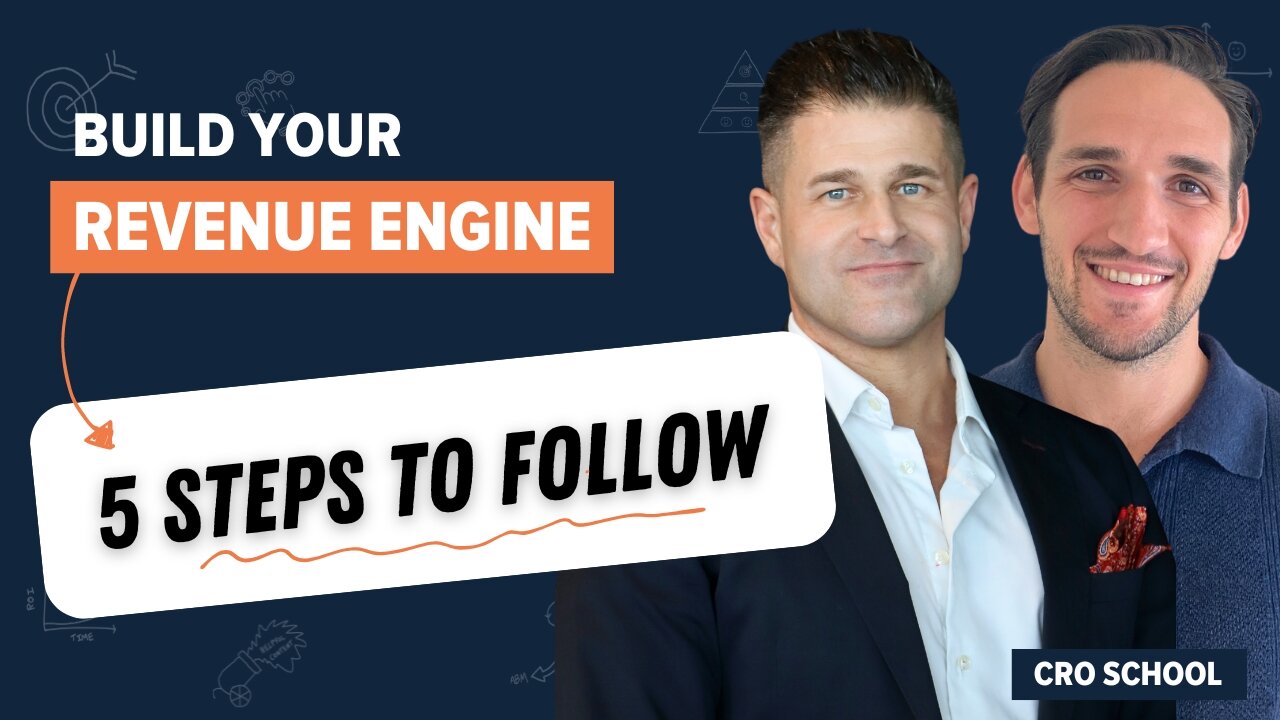
5 Steps to Building an End-to-End Business Growth Engine | CRO School - Part 1
We’re struggling to hit our quota”… “Marketing is sending us junk leads”… “The market has gone soft”…
“We’re going to fall short of our targets”…
My good friend Adem Manderovic told me that as a 7 times ex-head of sales, he’s seen and heard every excuse under the sun when a team misses their quota. Sales point the finger at marketing. Marketing is frustrated with Sales. Customer Success is sick of dealing with unhappy customers.
Trust me, finger pointing gets you absolutely nowhere.
As long as your teams work in opposition to each other, you will never consistently, and profitably win new customers.
So how do you build a growth engine that your whole company can get behind? A growth engine that drives the business forward profitably?
We’ve teamed up with 7x ex-head of sales (Adem Manderovic) to bring you a complete end-to-end system that businesses have used to align their teams for ultimate success. If you’re a CRO, Head of Sales, Head of Marketing – or want to see what an efficient acquisition system looks like – read on!
We’re sharing our 5 step growth engine system over the next 5 episodes.
Today we’re going to cover:
Why selling the meeting is killing your business
Why marketing can’t help the situation
An overview of our 5 step system for end-to-end growth
As per usual, you can watch, listen or read this episode below!
Listen To The Episode
Watch The Episode
Table of Contents
Listen To The Episode
Watch The Episode
Why ‘Selling The Meeting’ is Killing Your Business
The Predictable Revenue Model Split
The Impact of This Model on Marketing
Marketing Is Not Allowed To Do Real Marketing
Why This Model Does Not Scale
The Breakdown Between Marketing and Sales
The Solution: End-To-End Organizational Alignment
An Overview of our Business Growth Engine
Step 1 – Define Your Next Best Target Customers
Step 2 – Earn Their Trust and Develop Relationships with Them
Step 3 – Get In Front of Your Target Customers
Step 4 – Maximise Your Chance of Winning Deals
Step 5 – Keep Your Customers Happy and Look for Expansion Opportunities
Next Steps For You
Why ‘Selling The Meeting’ is Killing Your Business
Companies that are largely ‘sales-led’ tend to have a bloated system for acquiring new customers. In simple words: it costs too much and uses too many resources to win a new customer. And even when you do win one, the churn rate is too high to make it sustainable.
The Predictable Revenue Model Split
‘Selling the meeting’ refers to marketing and sales teams doing everything they can to book a meeting with a prospect. It’s a hangover from the Predictable Revenue model, which splits out the sales role into three separate ones: the Sales Development Team (SDR), Market Response Team (to qualify inbound leads), and the Account Executives. The split out is supposed to enable the SDRs to focus on low-value yet high-volume activities such as prospecting to cold accounts, and Account Executives on low volume but high-value activities such as building relationships at key accounts.
So the SDRs job becomes to prospect accounts and book meetings. Often incentivised by the number of meetings booked, this results in the following approach:
A high volume of outbound activity (calling, emailing)
Booking the meeting at all costs (even if it’s not the right fit)
Churning and burning the market
The SDR often has a limited understanding of the customer, or technical knowledge of what they’re selling. This is why the approach requires high-volume activities – to find the needle in the haystack that have an obvious need and want for the product they’re selling.
The result?
Sales teams missing targets, budgets, OTE and losing SDRs
Deals churning at Customer Success because they’ve been sold a dream you can’t fulfil
A divide between sales and marketing, as sales feel that marketing isn’t doing anything to get leads ‘sales-ready’
An army of sales people trying to find the needle in the haystack is not a good model for your business – unless you have serious cash to burn.
Here’s some other drawbacks of this approach;
You’re churning and burning the market that aren’t responding to you
It’s a bloated method to acquire customers
Your deals get stuck with legal because there’s no alignment
Deals churn at customer success because you can’t deliver on promises made
The Impact of This Model on Marketing
Armed with a bloated sales team hungry for leads to call, marketing’s task becomes: get ‘leads’ for the sales team to contact.
The requirement for these ‘leads’ is immediate, and marketing are set a target of Marketing Qualified Leads (MQLs) to meet. Often poorly defined, the MQLs encourage marketing to do activities that gets the contact details of prospects.
So the marketer often whips together an eBook, uses ads to push it in front of prospects, gives it to them in exchange for their email address, and then hands this ‘lead’ over to sales to contact.
The result?
The sales person tries to get in touch, and
(A) there is not response, or
(B) the person has no brand recall and doesn’t want to speak to you
The MQLs are expensive for the marketing team to acquire (cost of the eBook, and ads to get it in front of prospects). The MQLs waste sales’ time as they try to find a needle in the haystack.
Marketing Is Not Allowed To Do Real Marketing
Under this model, marketing is forced to feed the ‘lead machine’ for the hungry sales team. This prevents the marketing team from doing real marketing.
What is real marketing?
Well, it’s marketing’s job to:
Get your prospect to prioritize the problem in the way you solve it, and
Lead them to the logical conclusion you’re the perfect company to help them do it
We share our own 5 BEs Framework for doing that here.
It’s very difficult to influence a buying decision when your primary KPI is to get contact details for prospects for sales.
Why This Model Does Not Scale
The reason that this model requires high-volume activities from the SDR and from Marketing is because research from The B2B Institute shows that only 5% of your market are looking to buy right now. The other 95% are not looking for a solution – many of them are not even aware of the problem that you help solve.
Add on another sobering statistic from Bain & Co., that shows 8/10 buyers won’t choose your brand if they haven’t heard of you before they start looking for a solution.
So even the 5% of the market looking to buy isn’t available to you. It’s 20% of the 5% – which is 1%. That’s why it feels like trying to find a needle in the haystack!
And that’s why this model requires a ‘spray and pray’ approach.
The Breakdown Between Marketing and Sales
With the above information, no wonder sales and marketing find it so hard to get along! The model for acquiring new customers and the incentives that drive it are what forces them apart.
Marketing don’t get the freedom and resources to do real marketing that makes prospects ready to speak to sales. And sales become exhausted looking for the needle in the haystack that’s ready to buy right now from your brand.
The Solution: End-To-End Organizational Alignment
So how do you move away from this Predictable Revenue method, and towards a system of acquisition that:
is far more efficient
requires less headcount
is sustainable
results in better, happier customers
You need end-to-end organizational alignment.
To achieve this, you need to get sales, marketing and customer success all playing on the same team. It requires an alignment in strategy, KPIs, incentives, and the implementation of feedback loops.
This is represented in our Business Growth Engine flywheel pictured above.
Adem and I will detail the 5 steps involved over the course of this mini-series.
An Overview of our Business Growth Engine
To give you a taster of what’s to come in this mini-series, below is an outline of our 5 step end-to-end business growth engine.
Step 1 – Define Your Next Best Target Customers
A major reason businesses fail to consistently win new customers is that there isn’t a clear direction on who your ‘best customers’ are. This results in a lack of focus that means your business will always be a jack of all trades, but a master of none.
A jack of all trades does not produce amazing customer success stories, because it’s not set up to do anything extremely well. It also makes it difficult to stand out from the competition when you’re trying to win new business. You need a business to trust you before they buy from you. Mediocrity won’t do that.
That’s why this process needs to start with defining who your business exists to serve, to the exclusion of others. So when people see your business, they think: “yes, I’m in the right place. These people understand me.”
Your company has limited time, budget and resources. Focus on your best customers. Find out what makes them such a great fit for your business. And then go and find more of them.
We use a few techniques in our framework to build this list of companies, and prioritise them (like cataloguing the market) – that’s a conversation for another time.
Step 2 – Earn Their Trust and Develop Relationships with Them
In step one, we made our list of companies that we’d like to do business with. We should also have a keen understanding of what led them to do business with us in the first place, and why they chose us over the competition. This information helps us map the ‘buying journey’ – i.e. the information we need to deliver to a potential customer to turn them into a paying one.
tep two is about creating content to deliver the information your potential customers need.
This includes:
(a) educational content to show potential customers that they should prioritise the problem you solve, and that you’re the perfect company to do it for them
(b) content that overcomes any objections prospects might have to using your product/service
(c) content that makes your prospects’ lives better, even without buying your product
This is the information that is going to make your target customers trust you, so when they have a need they will buy from you.
Step 3 – Get In Front of Your Target Customers
We’ve created the information we need to get target customers to trust us in step two. Now we need to actually get it in-front of their eyeballs.
There’s three ways we can do this:
1:Many (e.g. advertising, organic social, YouTube, forums)
1:Few (e.g. webinars, events, industry associations, town halls, live quoting days)
1:1 (e.g. email, call, text)
Marketing is typically better equipped to handle 1:Many and 1:Few. Sales are better equipped to handle 1:1 interactions. The key here is alignment between the two teams, so they’re working to get these messages in front of the same target customers.
Step 4 – Maximise Your Chance of Winning Deals
Once you get a target customer in the room, how do you maximise your chances of winning their business? What I’ve learned at this stage from my years working on Mega Deals in enterprise is that over preparation is the key.
Make sure you have the key people in the room for a ‘live quoting day’, and get all the information you need to make sure the deal is viable for both parties.
Here you show them how you’ll lead them to the ‘promised land’ with your product, and also have the opportunity to overcome any objections as they’re raised in the room.
Show them your communication plan, including things like: visitation cycle, video call cycle, agreed KPIs, key stakeholders for QBRs – even how often and where doughnuts will be delivered!
This gives you an incredible line of sight on what it’s like to work together. You can also discuss your commercial deal pack (like who’s legal proforma will be used, what credit score is needed) to save you back and forth in future.
For companies dealing with smaller contract values, the ‘live quoting’ day is the equivalent to a ‘demo’. The principles of over preparation, and showing the customer exactly what to expect still apply.
Step 5 – Keep Your Customers Happy and Look for Expansion Opportunities
In step four, we won over the target customer. Now step five is about how do we ensure we set them up for success to reduce the chances of them leaving us? Proper customer onboarding is incredibly important here. Having a checklist of things that must be done prior to the client going ‘live’ will reduce oversight and errors.
In your commercial deal pack, you’ll want to make sure it includes: approval, log-in details, account manager details, communications plan, and any other final checks that need to be done.
Once the deal is done and you’ve had a first win for the new customer, you should look for any opportunities to expand your business within theirs. Do they have any additional sites or branches you can help too? Do they know any other businesses like them that they could refer you to?
Happy customers are far more likely to refer your business internally and externally.
Next Steps For You
Want to learn more about how to implement this in your business?
We have of course simplified the 5 step process for you here. The devil is (as always) in the details. If you’d like more information on how we can put this end-to-end growth system in place for your business, or train your team up internally to do this, please check out our end-to-end business growth engine program here.
GET OUR 5-STEP GROWTH ENGINE SYSTEM
WATCH THE FULL MINI-SERIES
-
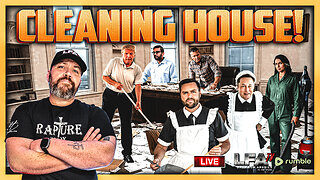 LIVE
LIVE
LFA TV
13 hours agoALL DAY LIVE STREAM - 4/24/25
3,506 watching -
 29:06
29:06
Standpoint with Gabe Groisman
1 day agoIran’s Rise Under Joe Biden
692 -
 LIVE
LIVE
Bannons War Room
2 months agoWarRoom Live
18,211 watching -
 LIVE
LIVE
Discover Crypto
1 hour ago$200K BITCOIN Happening: Nation-State ACCUMULATION Underway!
153 watching -
 2:37:20
2:37:20
Scammer Payback
19 hours agoCalling Scammers Live
2K -
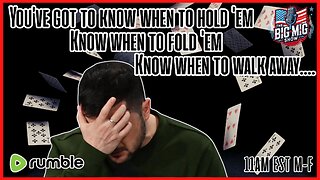 LIVE
LIVE
The Big Mig™
2 hours agoZelensky The Man With NO Cards To Play
4,557 watching -
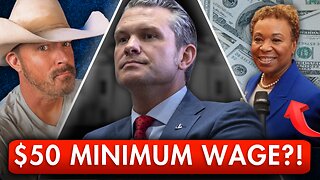 1:23:13
1:23:13
Dear America
2 hours agoUS Military IS BACK, Sees RECORD Numbers + Dem Rep. Calls For Outrageous Minimum Wage Increase!
55.8K22 -
 LIVE
LIVE
Badlands Media
4 hours agoBadlands Daily: April 24, 2025
4,902 watching -
![🔴[LIVE] Markets Whipsaw, Breaking News & Live Trading || The MK Show](https://1a-1791.com/video/fww1/09/s8/1/J/o/K/E/JoKEy.0kob-small-The-MK-Show-Apr.-24th.jpg) LIVE
LIVE
Matt Kohrs
10 hours ago🔴[LIVE] Markets Whipsaw, Breaking News & Live Trading || The MK Show
905 watching -
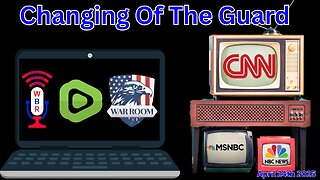 LIVE
LIVE
Wendy Bell Radio
6 hours agoChanging Of The Guard
8,215 watching